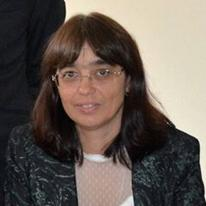Physics, Electrical and Structural Properties of Dielectric Layers
A special issue of Materials (ISSN 1996-1944). This special issue belongs to the section "Electronic Materials".
Deadline for manuscript submissions: closed (10 April 2023) | Viewed by 18476
Special Issue Editor
Interests: physics, technology, electrical, and structural properties of dielectric and semiconductor layers; emerging nonvolatile memories; nanoelectronics; gas sensors
Special Issues, Collections and Topics in MDPI journals
Special Issue Information
Dear Colleagues,
Dielectric materials have a very wide application range in a different kind of sensors and detectors, data storage devices, electro-optic devices, transducers, energy harvesters, etc. This is due to their physical, electrical, and structural properties which give rise to diverse physical phenomena, such as ferroelectric, piezoelectric, pyroelectric effects, etc. In the studies of dielectric materials, of particular interest are issues such as the physics of charged dielectric materials, conduction mechanisms, dielectric polarization and dielectric relaxation mechanisms, space charge, nonlinear effects, and electric aging. Recent advances in deposition and processing of dielectric layers allow for superior control and tailoring of their properties to meet the requirements of a certain application. On the other hand, precise characterization techniques make possible the elucidation of the mechanisms that control these properties on a micro- and nanoscale in close relation to the technology of dielectric layer.
In this Special Issue, recent progress in dielectric layers, their technology, and advanced characterization are addressed. Emerging applications specific to dielectric material are also of particular interest.
It is my pleasure to invite you to submit a manuscript for this Special Issue. Full papers, communications, and reviews are all welcome.
Prof. DSc. Albena Paskaleva
Guest Editor
Manuscript Submission Information
Manuscripts should be submitted online at www.mdpi.com by registering and logging in to this website. Once you are registered, click here to go to the submission form. Manuscripts can be submitted until the deadline. All submissions that pass pre-check are peer-reviewed. Accepted papers will be published continuously in the journal (as soon as accepted) and will be listed together on the special issue website. Research articles, review articles as well as short communications are invited. For planned papers, a title and short abstract (about 100 words) can be sent to the Editorial Office for announcement on this website.
Submitted manuscripts should not have been published previously, nor be under consideration for publication elsewhere (except conference proceedings papers). All manuscripts are thoroughly refereed through a single-blind peer-review process. A guide for authors and other relevant information for submission of manuscripts is available on the Instructions for Authors page. Materials is an international peer-reviewed open access semimonthly journal published by MDPI.
Please visit the Instructions for Authors page before submitting a manuscript. The Article Processing Charge (APC) for publication in this open access journal is 2600 CHF (Swiss Francs). Submitted papers should be well formatted and use good English. Authors may use MDPI's English editing service prior to publication or during author revisions.
Keywords
- Dielectric materials
- Dielectric properties
- Dielectric phenomena
- Technology of dielectric layers
- Application of dielectric layers






